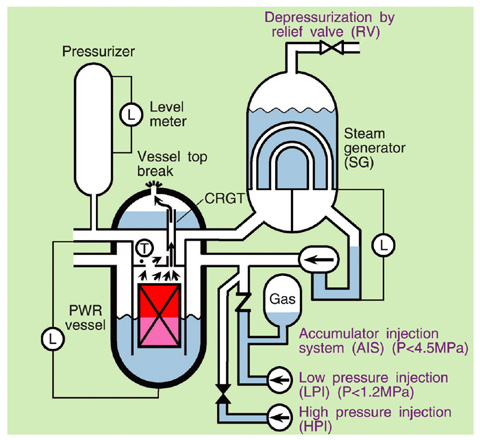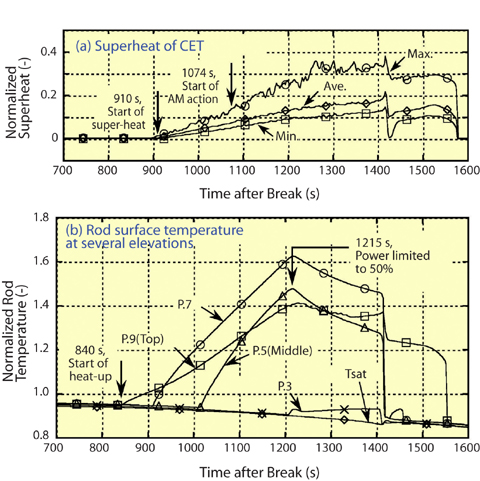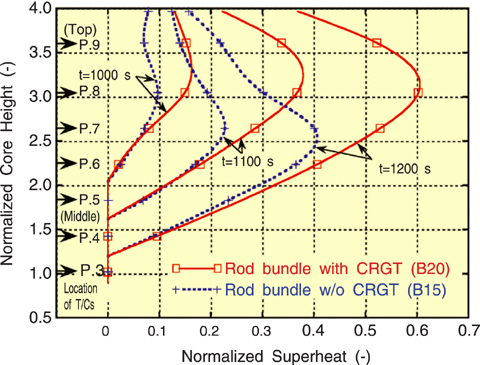
Fig.5-7 CET validation in a PWR top break LOCA test

Fig.5-8 Maximum steam superheat detected by CET (a)
was later and lower than superheat of rods in core (b)

Fig.5-9 Comparison of axial steam temperatures in two rod bundles with and without CRGT at the core exit
We conducted a Large Scale Test Facility (LSTF) test simulating a pressurized water reactor (PWR) loss-of-coolant accident (LOCA) caused by a small break at the vessel top under assumption of the total failure of high pressure injection (HPI) system (Fig.5-7). This test was part of the OECD/NEA ROSA Project which is an international cooperative study on reactor safety and advanced code development, one goal being the validation of a core exit thermocouple (CET) to detect core overheating and give a cue to start steam generator depressurization, an accident management (AM) action.
The CET detected superheated steam temperature, but this was 70 s later than the start of core superheating, and there was a further delay of 160 s to detect the temperature at which AM action is started, 623K. Thus, a large temperature difference was found between the CET and the hottest fuel rod (Fig.5-8). We found two reasons for this. One was the cooling effect of structural metals on uprising steam. The second one, specific for this test, was that steam flow convergence into the control rod guide tube (CRGT) inlet (Fig.5-7) induced three-dimensional steam flow in the core. In fact, steam temperatures in upper part of a high power bundle without a CRGT (B15) were significantly lower than those in B20 bundle with CRGT, suggesting colder steam inflow from the periphery following after the hot steam that went to a neighboring bundle with a CRGT (Fig.5-9). The CET installation outside the CRGTs may have caused further discrepancy from the hot core.
We showed that such CET response was possible in actual PWR operation, and furthermore demonstrated the usefulness of alternative indexes measured by water level meters (3 kinds; "L" in Fig.5-7).
OECD/NEA has just started study of CET effectiveness in PWRs. (This paper contains findings of the OECD/ROSA Project with its consent for publication.)